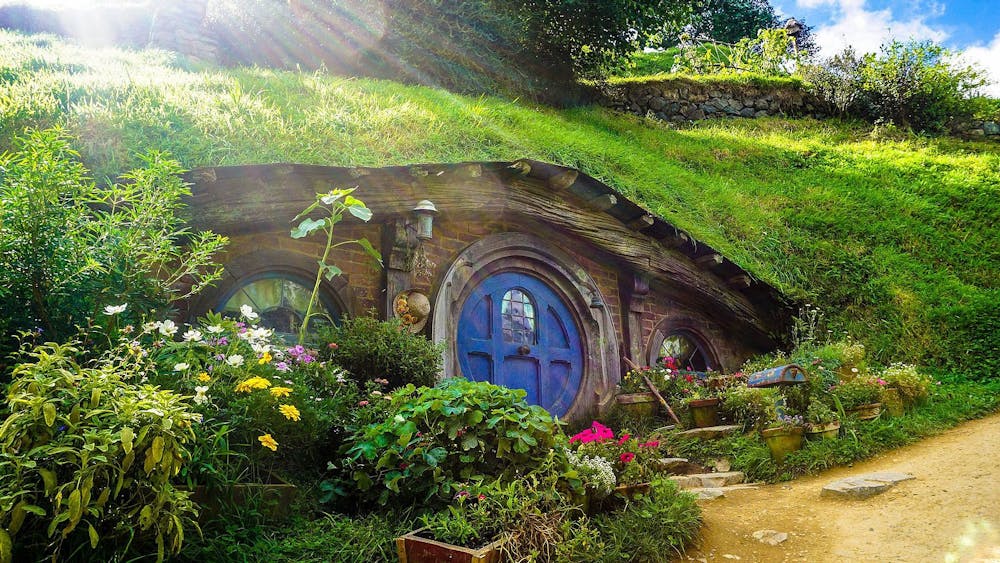Nearly five years after it was first announced, Amazon Prime’s The Lord of the Rings: The Rings of Power debuted its first two episodes on Friday, Sept. 2. Drawing in more than 25 million views and costing over $715 million dollars for the first season — both record-breaking numbers — The Rings of Power was bound to enter the TV universe with a splash.
It has… if not precisely the one Amazon desired, with this venture to the Second Age of Middle-Earth entering a war against HBO’s House of the Dragon and with intense review bombing from fans who preemptively made up their minds about the show.
Since its release, fans and critics have largely been divided, with negative to mixed responses in the former and positive in the latter. This rocky reception was expected as the show has been subject to critique and scrutiny since its first teasers appeared in February. Swaths of fans attacked both the show creators and the actors for ruining Tolkien’s creation by injecting “woke politics” into Middle-Earth, turning a typically peaceful corner of the internet into a fierce battleground.
As someone who spends a considerable amount of time on the internet’s Tolkienian corners, I was cautiously optimistic about the show. I was firmly against the racism of many “critiques.” I had hesitations about rumored changes to established lore and concerns about Amazon touching something near to my heart, but was far from having a predetermined conclusion.
As I watched the first episodes, it was clear that the creators had done their homework, prominently featuring visually-stunning renditions of some of Tolkien’s most anticipated images. These included the Two Trees of Valinor — Laurelin and Telperion — above the elven city of Tirion, the Shadowy Seas parting and the sprawling underground realm of Khazad-Dûm at its height as well as subtle references to fan-favorite characters such as Lúthien Tinúviel.
While the visuals were fantastic and the soundtrack echoed many themes from Peter Jackson’s The Lord of the Rings trilogy, they are worth little without a meaningful and compelling story.
In structuring this review, I’ve tried my best to refrain from citing lore and I recognize that adaptations will always tamper with written material in some way, but it’s hard to excuse changes which undercut established foundations — and The Rings of Power is overflowing with them.
As an example, it doesn’t matter to me that the elves of Lindon utilize fireworks to celebrate a departing ship even though they won’t be invented for another 5000 years. It does matter that the ship they are celebrating is only permitted to sail to Valinor — the land of the gods and ultimate haven for all elves of Middle-Earth who are spiritually called to it — with specific permission of High King Gil-galad. One is aesthetic, but the other fundamentally changes Tolkien’s creation by shifting a spiritual journey to a political tool.
Many, many such changes exist, including introducing Harfoot Hobbits thousands of years prior to their emergence, compressing a 3000-year story into a human lifespan, the “meteor man” and disregarding character motivations to create tension. While there are many unfilled gaps in Tolkien’s Second Age material, anything inserted into said gaps should adhere to core themes.
In the Second Age, these themes are the lingering of the elves and their desire to remain eternal in an ever-changing world and the inevitable downfall of men as jealousy consumes them. These themes may appear, but beyond the lightest hints they are yet to be found.
The largest factor in these changes seems to be the lack of source material at Amazon’s disposal. The majority of Tolkien’s writings on the Second Age are found in The Silmarillion and The Unfinished Tales, neither of which Amazon has the rights to use. Instead, Amazon is relying on a smattering of paragraphs in the appendices of The Lord of the Rings, which only offer a highly abbreviated history and fail to invoke the religious imagery core to Middle-Earth.
This is the fundamental failing at the heart of The Rings of Power: it offers only the trappings of Middle-Earth without the soul, thus delivering a boring, mediocre show that fails to capture what makes Tolkien the pinnacle of fantasy.
I first entered Middle-Earth with my dad reading six-year-old me The Hobbit; I read The Lord of the Rings at eight and have re-read them almost every other year since. As I’ve grown, I’ve realized that it’s not dragons or elves or dark lords that makes Tolkien, it is the nuanced world developed by fusing Germanic, English and Catholic themes into a unified whole, lacing each part with intense meaning.
To Tolkien, writing was an act of creation with humanity refracting the light of divine creation into smaller sub-creations. There is no refraction of heaven in Amazon’s eyes, only a desire to compete with Game of Thrones and further develop a streaming platform.
I wish that I had positive comments about this show, I really do. I wish that it transported me back to Middle-Earth and comforted me in escape. While I will watch the show to its end, I can’t recommend it. Read The Lord of the Rings, watch Jackson’s films — which remain a near-perfect adaptation — and fall in love with Tolkien and Middle-Earth as I have.
I hope to find you there.





